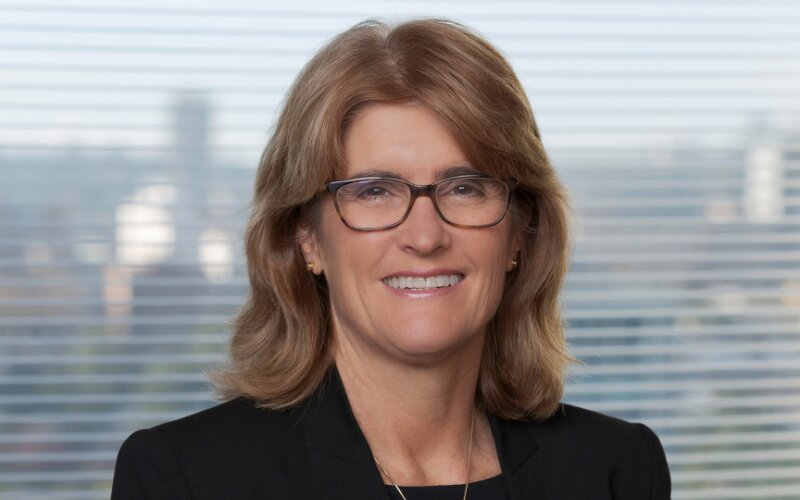Phil Lowe’s fate as RBA Governor was always a foregone conclusion from the minute Treasurer Jim Chalmers ordered a scathing review into the inner workings of the central bank. Along with his tone-deaf comments, unwillingness to move when economic circumstances changed in unexpected ways, and his ‘promise’ rates would not rise until 2024. If you read my piece on Phil Lowe last month, you’d have a pretty good view on where I sit with the man.
But as of 18 September, that won’t matter anymore. The Lowe era will be well and truly dusted off, and the changing of the guard will be in full swing.
Enter, Michele Bullock.
The first female, and ninth overall, Reserve Bank of Australia Governor.
Dubbed an RBA “lifer,” Bullock joined the bank in 1985 and has held a number of positions, most notably, the current RBA deputy governor. A role she has held for just 15 months.
The choice of Ms Bullock sticks with the convention of the government picking the bank boss from within the engine room.
But is that the right path to go down? Given the review's criticisms of the bank's culture suggested it may have been time to pick an outsider to implement changes to culture, governance, and practices? Plus, Bullock has been by Lowe’s side this entire time. Will she really have different views on the connection between rate hikes and inflation, the economy, struggling households, and unemployment?
Only time will tell.
For many of us, we’re certainly hoping Michele Bullock will be our ‘Dame’ in shining armour. You know, getting inflation back to target without upping the cash rate any higher, and consequently lowering interest rates. Our fingers and toes are crossed. But will this really be the case?
What will determine Bullock’s success?
Timing is everything. And in Ms Bullock’s case, hers is right right on cue.
Inflation is already on the way down (sitting at an annualised 6%), and unemployment, inexplicably, has remained incredibly low at 3.5% despite the most relentless series of rate hikes in the country’s history.
You could argue she does have it easier than Lowe, succeeding him at the tail end of this rate rise cycle (one can hope).
But there’s still a way to go. Bullock’s true goal is what we’ve all been hearing on the news or talking about over the last year and a bit - returning inflation to 2-3% while ensuring full employment. And how on earth will the bank’s objective be achieved? Through none other than interest rates of course…how great for the rest of us punters. They are the main lever used to guide the economy - the cash rate must be set at a level that will skew current economic conditions, the almighty inflation rate.
If Bullock manages to get annual inflation to around 2.5%, and if the unemployment rate is consistent with annual wages growth, she could very well earn herself a gold star. But don’t forget that any economic results through the first six to 12 months of Bullock’s succession won’t be hers, they’ll be Dr Lowe’s. There are long lags between interest rate hikes and the flow on effect they have on the economy.
Another question remains.
Will Bullock be able to remove the 10-tonne bricks crushing a generation of homebuyers who have experienced a near doubling in their monthly repayments?
Well, for households, there’s no doubt Bullock’s popularity will be determined by rate holds, or the 10x more favourable rate cuts. Some homeowners may even find relief from the fact that decisions being made by the RBA and the direction the central bank is attempting to forge will be more transparent to the public.
Ironically, this is what led to Dr Lowe’s downfall. But you’d think Ms Bullock would have learned from his failures.
You also can’t forget that Ms Bullock will lead the RBA through the once in a generation overhaul of the major bank. How she takes this on board, and the performance that comes with it, will also determine her success as Governor.
Should Bullock get any or - let’s face it - all of the above wrong, not much else will matter in terms of success.
Is Bullock up for the role?
It’s been clear the Albanese government wanted change, but clearly not too much change to rock the boat. Otherwise, they would have steered clear of choosing a new leader who was technically already directly in line for the ‘throne.’ As such, the RBA’s precious pecking order has not yet been disrupted and Bullock is ready to take the crown.
But will she even have any differing views to Dr Lowe? Given she’s been beside him since rates went up? You could assume they’re tied at the hip like besties.
The whole point of the reforms proposed by the recent review of the central bank’s performance was to bring in a fresh set of eyes. This certainly doesn’t seem like taking the right foot forward.
But, there sure is a lot of praise out there for Ms Bullock.
Treasurer Jim Chalmers said Ms Bullock is the person best-placed to take the Reserve Bank into the future.
"Michele is an outstanding economist, but also an accomplished and respected leader,” Dr Chalmers said.
“Her appointment best combines experience and expertise with a fresh leadership perspective at the Reserve Bank as well.”
Governor Phil Lowe said the Treasurer has made a first-rate appointment.
“I congratulate Michele on being appointed Governor,” Dr Lowe said.
“The Reserve Bank is in very good hands as it deals with the current inflation challenge and implementing the recommendations of the Review of the RBA. I wish Michele all the best.”
Although you wouldn’t really expect him to say otherwise, would you?
PRD Chief Economist Diaswati Mardiasmo said it is quite comforting knowing the RBA will have a new Governor who is “fresh” but “familiar” all at the same time.
“In the sense that we have someone who is respected and very well qualified, someone who is independent and not political, but at the same time someone who is well versed on all things RBA,” Dr Mardiasmo told Savings.com.au.
“I think this is a good base for innovation – Michele can bring in new fresh perspectives or thoughts, but is also familiar with the RBA’s calculations, projections, and mechanisms.
“Essentially, someone who has been there through it all, someone who knows the ins and outs, the good and the bad. Michelle would have seen and learnt a lot from Philip Lowe – positives and negatives.“
Is Bullock up for the job? Dr Mardiasmo believes so.
“In terms of what we can expect, I think we can expect a steady handover. I am not expecting a sudden or out-of-the box ‘crazy’ change to be honest,” she said.
“I say this because economic fundamentals – inflation, wage growth – and how they work, doesn’t really change. And at the end of the day, I would think a steady handover is what we want. We already had quite a lot of uncertainty in the past 12-24 months, so do we really need more?”
While Bullock is not an obvious choice to lead a remaking of the RBA culture, Centre for Independent Studies Chief Economist and former central banker Peter Tulip said people that have worked closely with Bullock speak very highly of her.
“Michele Bullock has spent her career within the RBA and has thrived under the old culture,” Mr Tulip told Savings.com.au.
“However, an ability and willingness to change the RBA were uppermost in the Government’s thinking in choosing among candidates.
“Jim Chalmers was clearly impressed by the positive contribution she made to the recent RBA review, so I trust that any concerns the Government had on this score were allayed.”
There’s also the fact that Ms Bullock hasn’t worked on monetary policy for a long time - only 15 months. Her expertise focuses on other areas of central banking such as financial stability, payments, and currency. And while this may suggest the role of Governor is way out of reach for her, Mr Tulip believes this isn’t a problem.
“With the appointment of monetary policy experts to the new interest rate setting committee, it will be less necessary for the Governor to be an expert on this herself than it was in the past,” he said.
“The thrust of the RBA review was that the central bank needed to rely less on the individual views of the Governor and include a wider range of views on monetary policy. So a leader like Michele suits that new role.”
Doesn’t seem like we have too much to worry about, does it?
What clues has Bullock left us?
Ms Bullock has left very few - wink wink, nudge nudge - hints to her approach to interest rates and taming inflation, so trying to figure out her ‘game plan’ is a little hard to decipher.
However, her recent comment that the unemployment rate would need to rise to 4.5% was pretty controversial.
"Employment is above what we would consider our inflation target," Ms Bullock told the crowd in Newcastle.
“A faster return to [the inflation] target would likely mean more job losses in the short term.”
To put it into context, an unemployment rate of 4.5% could see approximately 140,000 people out of jobs. Is that what any of us really want? Probably not. Maybe not even Bullock (even though she came out with that statement). But that’s what economists and the RBA argue - a certain number of workers need to be chucked out of the workforce to control inflation. This is known as the Non-Accelerating Inflation Rate of Unemployment (NAIRU).
If you want X level of inflation, you need to have X level of unemployment.
High inflation is corrosive, there’s no doubt about that. It can seriously damage the economy, so it must be tamed, and quickly. So yes, that may mean a few more people out of jobs, unfortunately. But I do find it “funny” that on the RBA website home page it says they “serve the people of Australia”. Coming outright and saying 140,000 people need to lose their job isn’t keeping Aussies’ best interests at heart one would think.
Other than that, there’s been few clues to how she’ll run the Board…so only time will tell.
Borrowers wondering if a new Governor will ease their financial strain shouldn’t expect a big change. Remember, Bullock has been one of the nine Board members who decided to raise interest rates 12 times over the last 15 months. If more hikes are needed to get the economy where it needs to be, she won’t be afraid to 'bring it on'.
Advertisement
Buying a home or looking to refinance? The table below features home loans with some of the lowest interest rates on the market for owner occupiers.
Image from the Reserve Bank of Australia website







 Brooke Cooper
Brooke Cooper
 Emma Duffy
Emma Duffy

